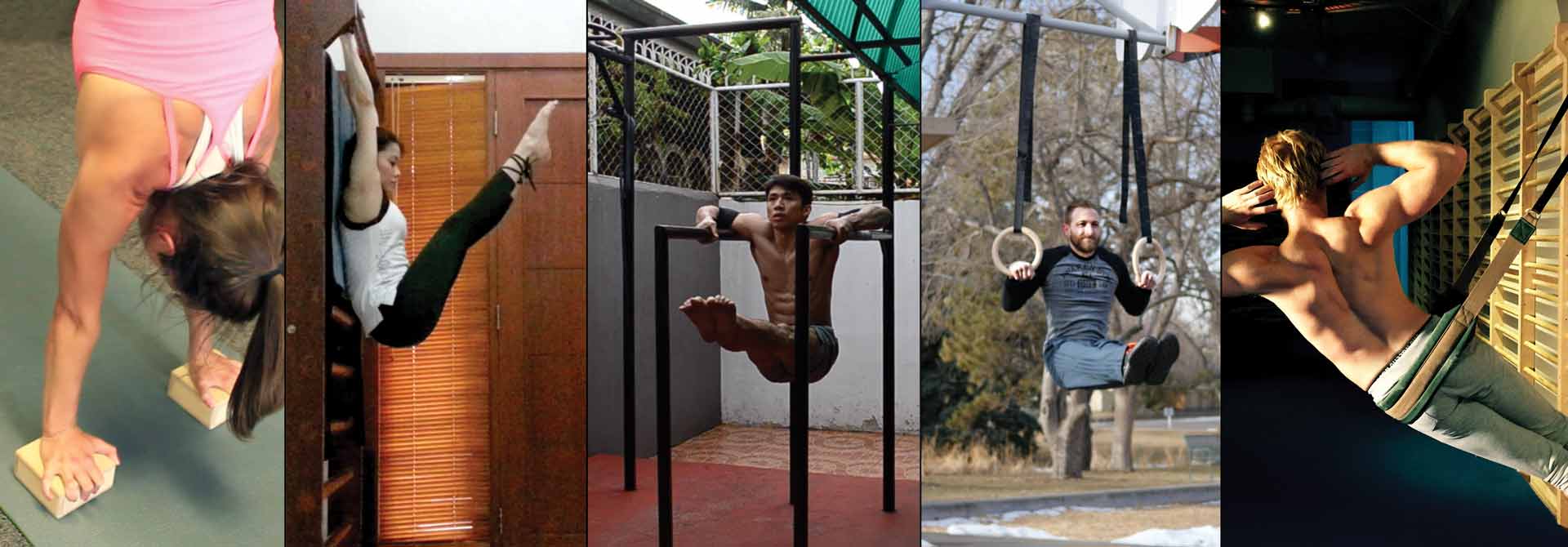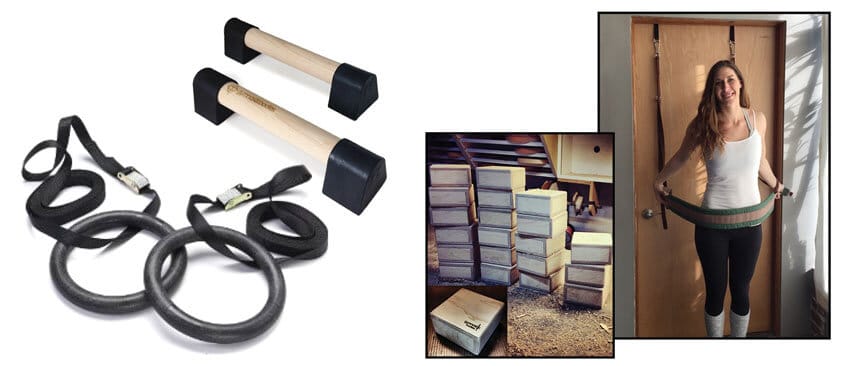Strength Training Equipment to Level Up Your Workout

Advanced calisthenics or Gymnastics Strength Training (GST) often utilizes strength training equipment that can provide a tremendous boost in strength and mobility gains.
Wikipedia defines bodyweight strength training as training that uses only the body for resistance. While this is partially true, do not make the mistake of thinking that you cannot gain or benefit from equipment used for your Gymnastics Strength Training. Here, we’ll get into a few options for low-budget equipment you can utilize in your at-home training.
Parallettes
Parallel Bars are usually associated with the sport of gymnastics. These consist of two rods that run parallel to each other in order to provide a different grip than the traditional overhand and underhand grips and can sit above head height of the athlete.
Parallettes are a set of mini parallel bars that are strong, low-cost, portable, and convenient. These are usually lower to the ground and way smaller than standard Parallel bars, some being small enough to fit into any training bag.
Exercises on the Parallettes
Examples of exercises performed on these include handstand drills, L-Sit work, planche work and Handstand Pushups. The added elevation of parallettes allows it to be used for working a larger range of motion in Handstand Pushups than can be achieved on the floor with Headstand Pushups. The parallettes can be stacked on objects to get enough height for proper HSPU while being completely portable. A Handstand Pushup descends all the way until the shoulders touch the bars whereas a Headstand Pushup only descends until the head touches the ground.
What is a Possible Equipment Substitute?
Any set of bars parallel to each other will work for a number of exercises. Some cool variations of parallel bars can be found on many playgrounds.
Handstand Blocks
Handstand Blocks are seen commonly in demonstrations by advanced hand-balancers. Also commonly set on canes, this piece of equipment has become a staple for intermediate to advanced hand-balancers alike.
Handstand Blocks are two blocks of wood cut to either a square or rectangular dimension. The size will vary depending upon the grip of the individual or the training purpose.
Exercises on Handstand Blocks
One of the primary functions of the blocks is to decrease the amount of pressure on the wrists during handstand training, while the added element of the height and grip detail will benefit your forearm, wrist and calibration techniques. When beginning, try placing your hands around the blocks, against a wall, and practice kicking up. You’ll notice the added challenge right away, and the blocks will help you develop more stability in your upside down line. Advanced hand-balancers will also use multiple sets of blocks as an exercise in trapezius strength by stacking and unstacking the blocks while in a handstand.
What is a Possible Equipment Substitute?
The handstand blocks are one of the most simple forms of equipment and come at a low cost. No substitution is needed!
Enjoy the core and back strength benefits obtained by training with a GB Backstrap!
Back Strap and Door Hangers
The Back Strap is a thick belt with a strap on each side that offers an extremely cost friendly and space saving substitute for a glute ham machine. Designed to hook onto stall bars or a doorway, it allows for quick setup and gives the feet an anchor point while doing exercises.
Exercises on Back Straps
Back Straps are primarily used for Arch Ups, Reverse Leg Lifts, and Oblique Crunches.
What is a Possible Equipment Substitute?
Back straps cannot easily be substituted. A pommel horse or box with a partner anchoring the feet may be used or the more adventurous student might use a weight plate for the anchor.
Stall Bars
Out of all tools of GST, the stall bar is the one students have most often have not used before. While this can make them intimidating, stall bars are an extremely versatile and effective piece of equipment seen in all gymnasiums all over the world.
A Stall bar is a series of rungs set in between two vertical posts. These rungs are evenly spaced to make choosing a comfortable grip simple and consistent. Stall bars are also a relatively inexpensive item to build as the only cost is wood, nails, wood glue and time.
Stall Bar Exercises
Common GB stall bar exercises include pike stretches, pancake stretches, and side lever work (aka human flag).
What is a Possible Equipment Substitute?
A proper stall bar is difficult to mimic. For the absolute beginner, a pull-up bar in between a door frame can be used for basic stretches while some students also find playground equipment with ladders to serve as a substitute. For side lever work and more progressive stretching,


